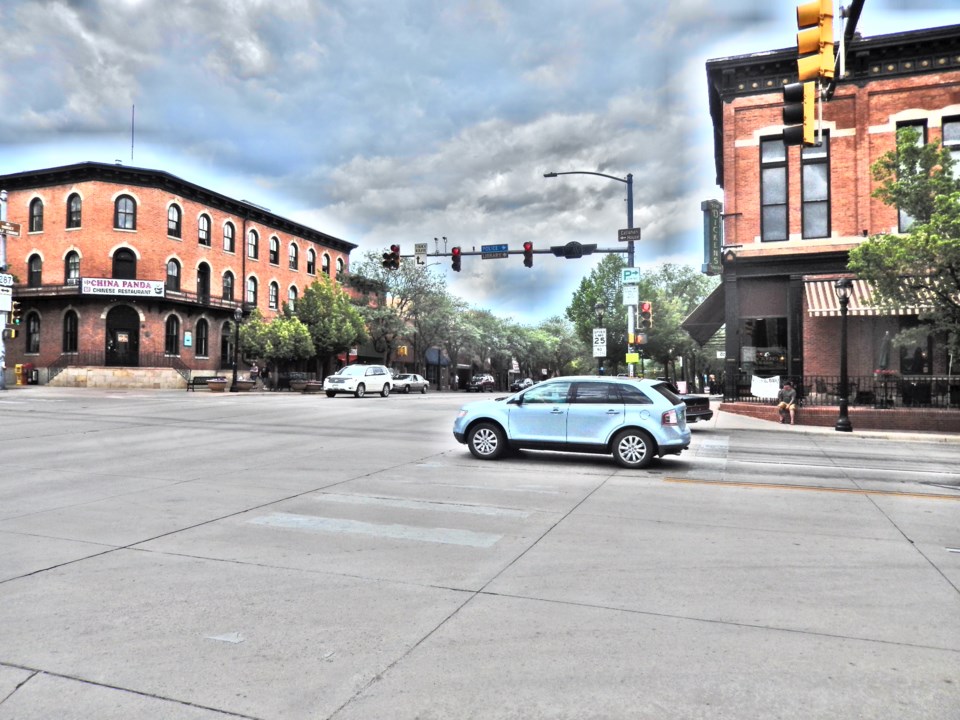This content was originally published by the Longmont Observer and is licensed under a Creative Commons license.
Ever wonder how Longmont came to be? As it turns out, it was founded on memberships. In 1870, several prominent Chicago businessmen decided to turn West to seek their fortunes. Coming to the area that is now Longmont, the men carefully planned a town and surrounding farms. Then they offered to let people in on their dream for a price. The businessmen sold memberships to pay for the 60,000 acres they planned to use for the town and farms. They called the town the Chicago-Colorado Colony. Within a year, they had brought in enough money, people, and supplies to build a small town. The Chicago-Colorado Colony was renamed Longmont after Long’s Peak which is so visible from the site, and Longmont was born.
The original plan for Longmont consisted of one square-mile of land including the quintessential Main Street. Streets were formed off of Main Street in a grid. The savvy businessmen had also planned and built large irrigation ditches that watered the farms surrounding the town. Thus, the townspeople were able to grow crops such as wheat, fruit, and peas among others. The Colorado Central railroad, built in 1877, and the St. Vrain River made ideal locations to situate industries, such as the first flour mill in 1872, and the Empson vegetable cannery in 1889.
Because of the irrigation and the rich soil found around Longmont, residents soon discovered that sugar beets also grew well here. They began planning for a factory on the eastern edge of town and by 1903, they began building the Great Western Sugar Company. Agricultural industries attracted many people to the area, including Swedes who settled northwest of Longmont. Germans, coming from Russia, came to farm sugar beets. Mexicans came to work in the sugar beet fields as well. By 1910, over 4,000 people lived and worked in Longmont.
With the influx of people came businesses, schools, and churches. Elizabeth Thompson came to Longmont in 1871 from New York. She founded what could be thought of as the first library in Colorado, although people could not check books out and had to read them on the premises. Located on Pratt Street, Library Hall contained 300 volumes and many art prints from Elizabeth’s own collection. The property also served as the Colony School for several years. The house that was Library Hall still stands today.
The Elite barbershop was Longmont’s first and oldest barbershop, beginning business in 1872. The building can still be seen on Main Street. In 1881, the Farmer’s National Bank was formed, claiming to be “as solid as Long’s Peak.” Initially, it was located in the Dicken’s Building at 3rd and Main. Also in 1881, George Zweck, a Prussian immigrant, built the Zweck Hotel which later became known as the Imperial Hotel. The structure still stands today at 3rd and Main and is home to the China Panda and the Java Stop Coffee Shop. The hotel had flushing toilets, European furniture, carpets and mirrors. It was warmed by coal-fired stoves in every other room. After a series of financial misfortunes, George sold the hotel to Charles Allen who renamed it the Imperial Hotel.
St. Stephen’s church, located at 470 Main Street, began as an Episcopalian church in 1872, and is designated as one of Longmont’s historical landmarks. In 1889, Thomas Callahan and his wife opened the Golden Rule, a store that sold dry goods and clothing. Thomas operated multiple Golden Rule stores across five states. One of his employees happened to be James Cash Penney, who eventually started the J.C. Penney Corporation. The Callahan’s bought a house on what is now 3rd Street and renovated it to meet their standards. This included running hot and cold water, central heating, and an electrical supply.
In 1905, the building on the northwest corner of 5th and Main Street was built by the Colorado Telephone Company to be Longmont’s telephone exchange. The building housed both the phone equipment and the operators. Five operators would work at a time in four hour shifts. A room was provided for them to relax in their downtime. Today, the building houses La Vita Bella Coffee in the basement of the building. The building itself is referred to as the Hansen Building after Sandy and Jim Hansen who poured much of their own money into restoring the building in the 1990s. Although this is only some of the history of Longmont, you can get more information by visiting the City of Longmont’s website or the Longmont Museum and Cultural Center.



